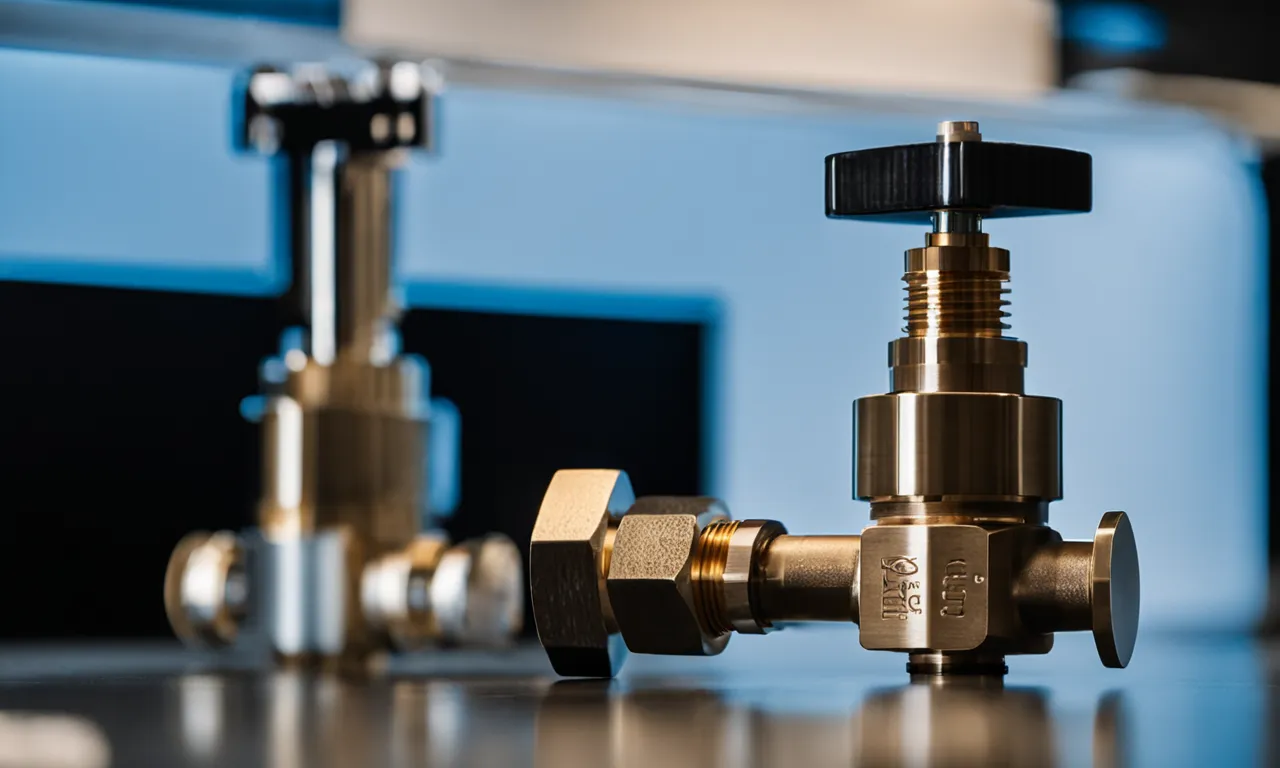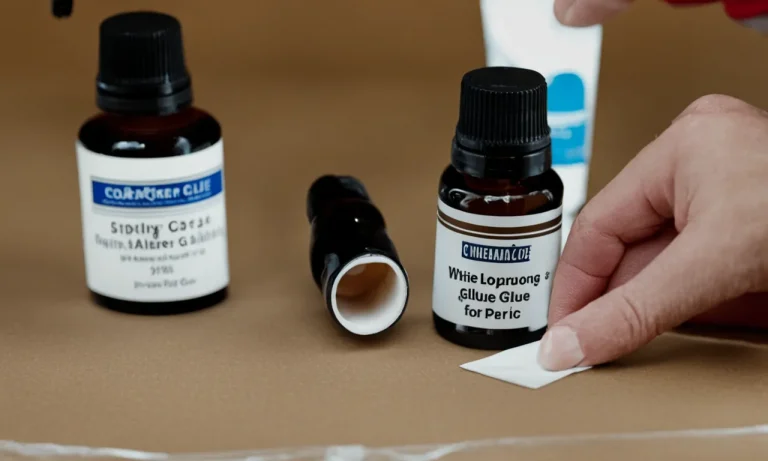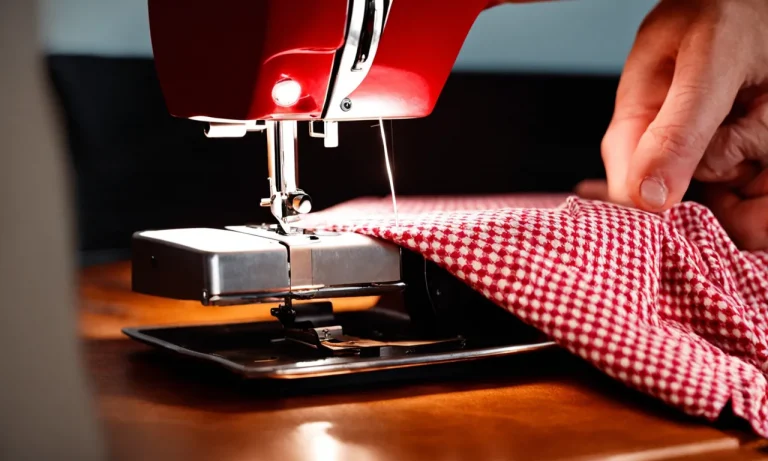How Do Needle Valves Work: A Detailed Explanation
Needle valves are a common component in many hydraulic and pneumatic systems. Their ability to precisely regulate fluid flow makes them an indispensable tool for engineers and technicians. But how exactly do these handy little valves work?
If you’re short on time, here’s a quick answer to your question: Needle valves use a tapered needle that fits into a tapered seat to precisely control fluid flow. As the needle is screwed in or out, the space between the needle and seat changes, increasing or decreasing flow.
In this approximately 3000 word guide, we’ll look at everything you need to know about how needle valves function, including their key components, types of needle valves, and applications.
What are the Key Components of a Needle Valve?
A needle valve is a type of valve that is commonly used to control the flow of fluid in various applications. It consists of several key components that work together to regulate the flow rate and pressure.
Understanding these components is essential to grasp how needle valves work and why they are so effective in controlling fluid flow.
The Needle
The needle is the most critical component of a needle valve. It is a long, slender, and tapered rod that fits inside a seat. The design of the needle allows for precise control over the flow rate by adjusting its position within the seat.
By raising or lowering the needle, the size of the opening through which the fluid flows can be increased or decreased, respectively. This fine adjustment capability makes needle valves ideal for applications that require precise flow control.
The Seat
The seat is a small, circular orifice through which the fluid flows. It is machined to match the taper of the needle, creating a tight seal when fully closed. The tight seal prevents any leakage when the valve is closed, ensuring that the fluid flow is completely shut off.
The seat is typically made of a durable material such as stainless steel or ceramic to withstand the high pressures and temperatures that needle valves are frequently exposed to.
The Packing
The packing is a crucial component that surrounds the needle and prevents any leakage along the stem. It consists of a combination of materials such as graphite or PTFE (polytetrafluoroethylene) that can withstand the fluid’s pressure and temperature.
The packing is compressed against the stem by the bonnet, creating a seal that prevents any fluid from escaping. Regular maintenance and replacement of the packing are essential to ensure the needle valve continues to function effectively.
Bonnet
The bonnet is the top part of the needle valve that houses the stem and packing. It is typically secured to the valve body using threads or bolts. The bonnet provides protection for the internal components and allows for easy access to the packing for maintenance purposes.
It also includes a handle or knob that allows the user to adjust the position of the needle, thereby controlling the flow rate of the fluid.
Understanding the key components of a needle valve is essential for anyone looking to utilize them in their applications. By knowing how these components work together, one can appreciate the precision and control that needle valves offer in regulating fluid flow.
Common Types of Needle Valves
Screw-Lift Needle Valve
The screw-lift needle valve is one of the most common types of needle valves used in various industries. It consists of a threaded stem that is controlled by a handwheel or knob. By rotating the handwheel, the stem moves up or down, allowing for precise control over the flow of fluid or gas.
This type of needle valve is widely used in applications that require fine-tuning and regulation of flow rates, such as in laboratories or industrial processes.
Diaphragm Needle Valve
The diaphragm needle valve is designed with a flexible diaphragm that acts as a sealing element. When the handwheel is turned, the diaphragm moves up or down, allowing the flow of fluid or gas through the valve.
This type of needle valve is commonly used in applications where there is a need for high precision and tight shut-off, such as in gas chromatography or medical devices. The diaphragm design ensures a leak-free operation and excellent control over the flow rate.
Butterfly Needle Valve
The butterfly needle valve gets its name from its butterfly-shaped disc that controls the flow of fluid or gas. When the handwheel is turned, the disc rotates to open or close the valve. This type of needle valve is commonly used in large-scale industrial applications where there is a need for quick and efficient control over the flow rate.
The butterfly design allows for a larger flow capacity compared to other types of needle valves.
Piston Needle Valve
The piston needle valve features a piston-like mechanism that controls the flow of fluid or gas. When the handwheel is turned, the piston moves up or down, opening or closing the valve. This type of needle valve is often used in applications where there is a need for high-pressure control, such as in hydraulic systems or steam processes.
The piston design provides excellent sealing capabilities and precise control over the flow rate.
For more information on needle valves and their applications, you can visit www.engineeringtoolbox.com.
How Do Needle Valves Regulate Flow?
Needle valves are commonly used in various industries to regulate the flow of fluid or gas through a system. These valves are known for their precision and accuracy in controlling flow rates. The unique design and mechanism of needle valves allow for fine-tuning of the flow, making them ideal for applications that require precise control.
Tapered Construction Allows Precise Flow Control
One of the key features of needle valves is their tapered construction. Unlike other valves that have a straight-through design, needle valves have a long, slender stem with a fine-pointed tip. This needle-like shape allows for gradual and precise adjustment of the flow rate.
When the needle is turned, it either moves closer to or farther away from the valve seat, which is a small orifice that controls the flow. This tapered construction enables the valve to regulate the flow by restricting or opening the pathway for the fluid or gas.
The fine-pointed tip of the needle valve helps create a tight seal with the valve seat, preventing any leakage or backflow. This feature is crucial in applications where leakages could lead to safety hazards or loss of valuable resources.
Relationship Between Needle Position and Flow Rate
The position of the needle in relation to the valve seat directly affects the flow rate of the fluid or gas. By turning the handle or knob of the valve, the operator can adjust the position of the needle, thereby controlling the flow.
Turning the handle clockwise pushes the needle further into the valve seat, reducing the flow rate. Conversely, turning the handle counterclockwise pulls the needle away from the valve seat, allowing for a higher flow rate.
It is important to note that needle valves are capable of providing precise control over a wide range of flow rates. This makes them suitable for applications that require both low and high flow rates, such as in laboratories, industrial processes, and hydraulic systems.
Flow Characteristics of Needle Valves
Needle valves offer several flow characteristics that make them highly versatile and efficient. Due to their tapered design, needle valves provide a linear relationship between the position of the needle and the flow rate.
This means that small adjustments in the needle position result in proportional changes in the flow rate, allowing for precise control.
Moreover, needle valves are capable of handling high-pressure applications. The fine-pointed needle and the tight seal with the valve seat help to withstand the pressure and prevent any leakage. This makes needle valves suitable for use in systems that operate under high pressures.
Key Applications and Uses of Needle Valves
Metering Fluids
One of the key applications of needle valves is in metering fluids. Needle valves are commonly used in industries where precise control of fluid flow is required, such as in chemical and pharmaceutical manufacturing.
The design of a needle valve allows for fine adjustments to be made to the flow rate, making it ideal for applications where accuracy is crucial. For example, in laboratory settings, needle valves are often used to control the flow of reagents or solvents to ensure precise measurements are obtained for experiments.
Regulating Flow in Hydraulic Systems
Needle valves are also extensively used in hydraulic systems to regulate the flow of fluids. Hydraulic systems are found in a wide range of applications, from heavy machinery to aircraft landing gear. The ability of needle valves to provide precise control over flow rates makes them an excellent choice for regulating the movement of fluids within hydraulic systems.
This ensures that the system operates efficiently and smoothly without any sudden surges or drops in pressure.
Throttling in Steam Systems
In steam systems, needle valves are commonly used for throttling applications. Throttling refers to the process of reducing or controlling the flow of steam in a system. Needle valves are well-suited for this task as they can handle high temperatures and pressures associated with steam systems.
By adjusting the needle valve, the flow of steam can be carefully controlled to meet the specific requirements of the system, whether it’s for heating, power generation, or industrial processes.
Mixing Fluids
Another important application of needle valves is in mixing fluids. Needle valves are often used in processes that require the precise blending of two or more fluids. For example, in the food and beverage industry, needle valves are used to control the flow of ingredients during the mixing process.
This ensures that the desired proportions are maintained, resulting in consistent product quality. Additionally, needle valves are also used in chemical and petrochemical industries for mixing different chemicals or additives in a controlled manner.
Advantages and Disadvantages of Needle Valves
Precision Flow Control
One of the main advantages of needle valves is their ability to provide precise flow control. The slender, needle-like stem of the valve allows for fine adjustments, making it ideal for applications that require accurate regulation of flow rates.
Whether it’s in laboratory settings, industrial processes, or fluid control systems, needle valves offer a high level of precision that can’t be achieved with other types of valves.
Compact Size
Needle valves are known for their compact size, which makes them a popular choice in applications where space is limited. Their small footprint allows for easy installation in tight spaces and makes them suitable for use in portable systems.
Despite their small size, needle valves can handle high pressure and provide reliable performance.
High Pressure Capabilities
Another advantage of needle valves is their ability to withstand high pressure. These valves are designed to handle high-pressure applications, making them suitable for use in industries such as oil and gas, chemical processing, and power generation.
With their robust construction and tight sealing capabilities, needle valves can effectively control the flow of fluids even at high pressures.
Not Ideal for Large Flow Volumes
While needle valves excel in precision flow control and high-pressure applications, they are not suitable for handling large flow volumes. Due to their narrow passageways, needle valves have limited flow capacity compared to other types of valves, such as ball valves or gate valves.
If your application requires a high flow rate, a needle valve may not be the best choice.
Higher Cost than Other Valves
One potential disadvantage of needle valves is their higher cost compared to other types of valves. The intricate design and precision machining involved in manufacturing needle valves contribute to their higher price tag.
However, the benefits they offer in terms of precision control and high-pressure capabilities often outweigh the cost for applications that demand such features.
Conclusion
In summary, needle valves are invaluable for applications that require accurate regulation of fluid flow. Their tapered design allows for precise throttling by changing the orifice size between the needle and seat.
While excellent for metering and throttling, needle valves do have limitations when larger flows are needed.
We’ve explored the key components, types, flow control principles, applications, and pros and cons of these versatile little valves. Understanding how needle valves work provides crucial insight for engineers, technicians, and anyone who uses fluid power systems.
With their precision flow control abilities, needle valves will continue being integral components in hydraulic, pneumatic, steam, and other industrial fluid systems.







